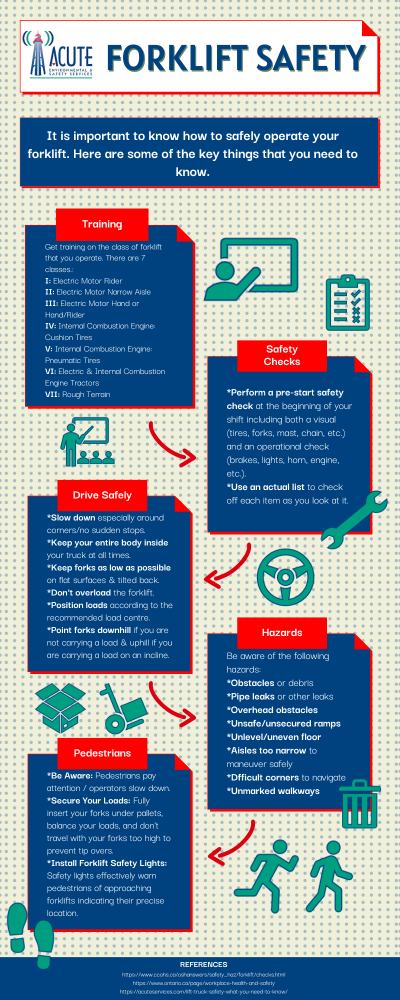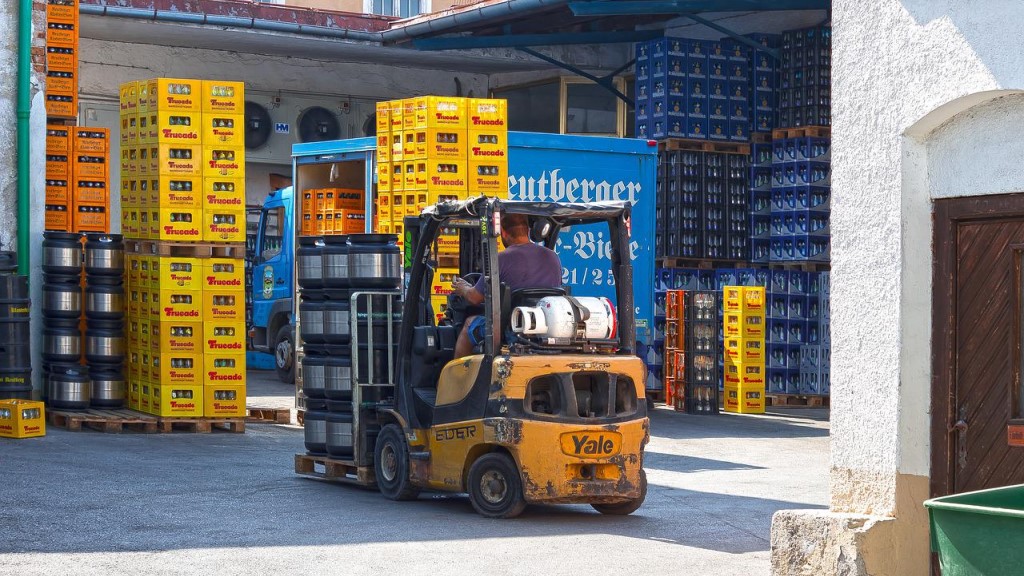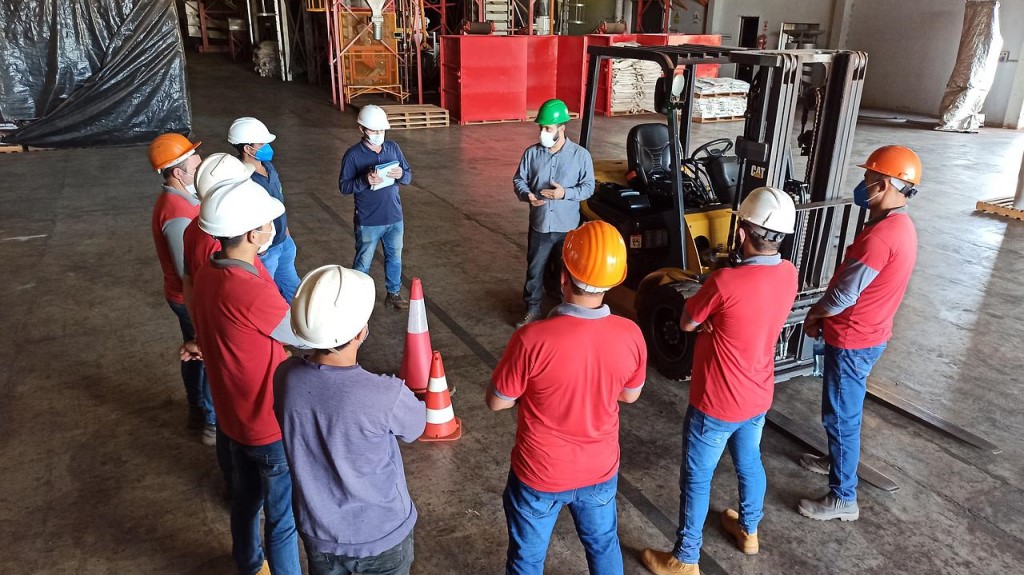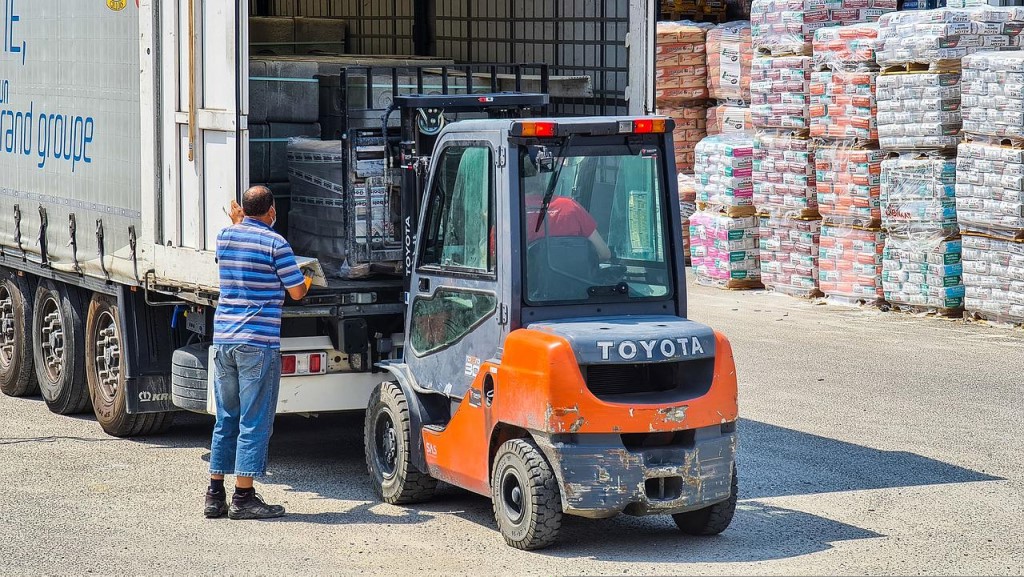It is important to know how to safely operate your forklift. Here are some of the key things that you need to know. Click on each section to learn more.
-
Get Training on the Type of Forklift Class You Operate
-
Always Perform a Pre-Start Safety Check
-
Follow Forklift Safety Driving Practices
-
Avoid Common Forklift Hazards in Your Surroundings
-
Follow Lift Truck Safety Protocols Around Pedestrians
If you are looking for proper forklift training, contact us.


Learn the fundamentals of lift truck safety -Image by donations welcome from Pixabay
Lift Truck Safety
1. Get Training on the Type of Forklift Class You Operate
There are 7 different classes of lift trucks. You need to get training on the class of lift truck that you will be operating. If you will be operating a different class of forklift than you were previously trained on and operated on, then you need to take training on that new type of forklift.
Here are the 7 different classes of lift trucks:
- Class I: Electric Motor Rider Trucks
- Class II: Electric Motor Narrow Aisle Trucks
- Class III: Electric Motor Hand or Hand/Rider Trucks
- Class IV: Internal Combustion Engine Trucks. Cushion Tires
- Class V: Internal Combustion Engine Trucks. Pneumatic Tires
- Class VI: Electric and Internal Combustion Engine Tractors
- Class VII: Rough Terrain Forklift Trucks

2. Always Perform a Pre-Start Safety Check
Doing a pre-start safety check at the beginning of a shift, is an important step in lift truck safety. This type of inspection needs to be done every day before you use your lift equipment.
Pre-start safety checks have several purposes including
- Letting you look for and discover any damage to your lift truck.
- Make sure your forklift is in good operating condition and that it meets the manufacturer’s specifications.
- Helping you to identify any maintenance problems before they cause an accident.
Pre-shift safety checks should include both a visual and an operational pre-check. Make sure you have an actual list to check off each item as you look at it; do not rely on your memory.
Visual Pre-Check
During your visual check, you should inspect the following:
Tires: Check all the tires for damage and excessive wear such as cracks, and remove any debris from around the wheels.
Forks: Forks must be level so look for excessive wear or cracks in the hanger welding or in the heel. The forks must be evenly spaced, and the four pins locked into place.
Mast: Check the mast assembly for any leaks, or drips; ensure the hydraulic hoses do not have any punctures or cuts. Check that it is free of foreign objects such as pieces of wood or wire.
Chain: Make sure the tension of the chain is tight and that the chain is well lubricated.
Load Backrest: Ensure that the load backrest is not damaged and is securely fastened.
Seat Belt: Check the seat belt to see if it is in good working order.
Safety Equipment: See if all safety equipment is attached and in good working order such as the fire extinguisher, mirrors, safety labels and the capacity plate.
Propane Tank: Check that the propane tank is secure. Smell and listen to the connections for any leaks. Frosting will indicate a leak.
Battery: If electric, make sure the battery cables are clean and connected.
Radiator: Look at the radiator to make sure it is clear of debris or trash.

Check that the tires are in good shape – Image by Alexander Fox | PlaNet Fox from Pixabay
Operational Pre-Check
Use a Three-Point Entry
Three-point entry refers to how you properly get on and off a forklift. Three points of your body need to be in contact with your forklift, at all times. Always enter and exit your forklift with two hands and a foot on the truck at the correct contact points.
Sit down and put your seat belt on. Once you are properly seated, perform the following checks:
- Emergency Brake: Put your foot on the brake, turn on the forklift, put it forward, and release the brake. If the forklift does not move, then the emergency brake is working.
- Other Brakes: Test all brakes, including the foot brake, the parking brake, and the deadman seat brake that stops the vehicle when the operator stands up.
- Noises: Listen for unusual noises.
- Controls, Seat & Steering Wheel: Check that the controls are clearly marked and that the seat and steering wheel are secure and properly adjusted.
- Horn, Alarm, Gauges & Lights: Check that the horn, alarm, gauges, and lights are all working.
- Engine: Check that the engine oil light is not on.
- Finish: Once you are satisfied that everything is functioning properly, put your foot back on the brake, put it in neutral, and turn off the forklift.

Do an operational check while seated in your lift truck – Image by ekenamillwork from Pixabay
Take the following steps if you find any issues during your inspections:
1. Take the forklift out of service: If you find anything that is unsafe or needs to be repaired, you must take your forklift out of service and red tag it until it is repaired.
2. Report the problem: Report any problems that you find to your supervisor immediately.
3. Make a written report: Enter detailed comments about any damage or concerns that you have on your written pre-shift inspection checklist.
3. Follow Forklift Safety Driving Practices
General Rules to Follow:
- Do not drive too fast and always decrease your speed when going around corners.
- Keep your hands, arms, feet, legs, and head inside your truck at all times.
- On flat surfaces drive with your forks as low to the ground as possible and tilted backwards.
- Try not to make any sudden stops.
- Keep watching in the direction that you are travelling.
- Look out for wet spots, oil spots, loose objects, holes, rough terrain, etc.
- Watch out for pedestrians and other vehicles in your vicinity.
- Sound your horn when going around a corner, into a building or to warn of your approach.
- Make note of any blind spots that you have in your lift truck when you are both carrying a load and when you are not.

Do not drive your lift truck too fast
Rules for Driving on an Incline
If you are driving your lift truck on an incline, you should point your forks downhill if you are not carrying a load and point them uphill if you are carrying a load.
This means that you will have to drive back down ramps when you have a load so that the load does not fall off. Drive backwards up a ramp when you are not carrying a load. You should also adjust the tilt of your forks to match the slope’s gradient and never try to turn your forklift on a slope. Wait until you are on level ground to turn.
Load Rules
- Make sure you know the manufacturer’s recommended maximum load limit for your forklift and of its forks. These numbers will be on your data plate on your lift truck. Do not exceed these maximums, they are there for your safety and for the security of your forklift.
- Position your load according to the recommended load centre. Never try to counterbalance an overload by adding extra weight.
- Position your load close to your front wheels to keep it stable.
- Keep your mast in an upright position and level your forks before inserting them into the pallet.
- Wait until your forklift is fully stopped before you attempt to lift your load.
- Check that you have enough overhead clearance and stay clear of any overhead power lines. Lift your load straight up and then tilt it back slightly
- Stay on your forklift while your load is raised as your lift truck is less stable in this position.
- Do not let anybody walk or stand near or under the elevated load. No one should walk under a raised forklift mast even if there is no load on it.

Do not let anyone walk or stand near a load that is elevated
4. Avoid Common Forklift Hazards in Your Surroundings
Before operating your forklift you should take a look at your surroundings and address any hazards.
Things that you should be looking for:
- Obstacles or debris that could be in the way or interfere with the safety of your forklift.
- Pipe leaks or other leaks that could be dangerous.
- Overhead obstacles that could come in contact with your equipment.
- Unsafe of unsecured ramps that you need to travel on.
- A floor that is not level may cause your forklift to tip.
- Aisles that are too narrow to maneuver safely.
- Corners that are difficult to navigate. Installing bollards or impact barriers can provide greater visibility and also protect your forklift and racks.
- Designated walkways should be clearly marked, and should include railings or safety gates for further protection.

Make sure your aisles are free of debris
5. Follow Lift Truck Safety Protocols Around Pedestrians
Moving forklifts and pedestrians are often present in relatively small aisles, pathways and storage areas. If these areas are not clearly marked, accidents can happen.
Be Aware of Each Other: Accidents can happen if a pedestrian is unaware or isn’t paying attention and they wander into the path of a moving forklift. Also, if operators are moving at excessive speeds or are not paying attention, then collisions are more likely to happen.
Secure Your Loads: If an operator has not inserted the forks under the pallet fully, if their load is off balance or not secure, or if they are travelling with their forks raised too high, their load may tip over and injure a pedestrian that is close by.
Install Forklift Safety Lights: Forklift safety lights can effectively warn pedestrians of approaching forklifts. Lights can be more effective than warning sounds, especially if you are wearing protective headphones. As well, lights can more accurately indicate the precise location and direction of the oncoming forklift than a warning alarm, as sounds can be misleading as to where they are coming from.
The following video demonstrates the effectiveness of using forklift safety lights.
Forklift safety lights can make your lift truck more visible
Looking for Effective Forklift Training? ACUTE Can Help
ACUTE’s Lift Truck Operator Course
Program Content
Regulations made under Ontario’s Occupational Health and Safety Act require that an employer ensures that the powered lift truck operator is a “competent person”. This training program will teach employees the knowledge and skills required for safe forklift operation as laid out in the “Ministry of Labour, Immigration, Training and Skills Development Ministry of Labour, Immigration, Training and Skills Development’s Guideline for the Safe Operation and Maintenance of Powered Lift Trucks”.
In our interactive eight-hour training program, your staff will learn the essential principles involved in the safe operation of a forklift. Participants will learn about the limitations that affect truck stability and safe loading criteria. Operators will be able to recognize the hazards ahead of time that presents a risk to themselves and those around the truck. A complete understanding of the fundamentals of handling high-risk loads as well as the legal responsibilities associated with lift trucks will also be covered.
Need Workplace Safety Training? Contact ACUTE
You can trust ACUTE for the best workplace safety training possible. ACUTE’s experienced team members have been serving safety professionals for over 20 years.
You can rely on ACUTE for hands-on, physically distanced, practical safety training to keep your employees safe in the workplace. ACUTE is dedicated to workplace safety and understands the importance of course and training provider approval.
Why get workplace safety training with ACUTE?
Here are just some of the benefits of working with ACUTE:

- Open Door Instructor-Student Partnership – ACUTE’s training services emphasize client participation. Staff foster relationships with clients and serve as a touchstone for advice anytime moving forward.
- Serving Your Team and Industry – With a vast array of clients in the manufacturing, construction, health, academic, and government sectors, ACUTE brings the best safety practices from across the spectrum to your workplace.
- 100 Years Combined Experience – ACUTE provides comprehensive health and safety training, on-site safety services, and consulting services. With over 100 years of combined experience, our company staff offer more than theoretical or abstract ideas. ACUTE offers solutions.
- Track Record of Success – ACUTE is rated 4.9/5 stars on Google reviews, demonstrating a commitment to our clients, quality, and passion for training.
Check out our course calendar for times and dates of our courses.
What Our Customers Are Saying…
“I work at the University of Guelph as an arborist. Ron Campbell provided a small socially distanced group and myself with working at heights training. Ron has a wealth of knowledge and kept everyone engaged with many “real life” examples of working at heights scenarios and facts. We have also received elevated work platform training with Patrick from Acute training. Patrick is also a very friendly, knowledgeable and engaging professional trainer. I truly believe that the best trainers are those with practical experience and the trainers at Acute have that locked down.”

